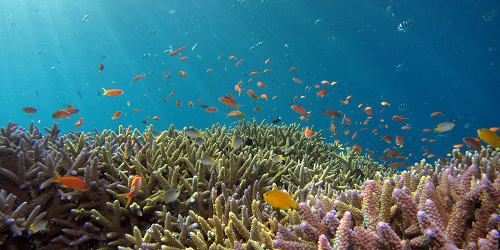September 19, 2025• Physics 18, 163
A group of Italian physicists was awarded the Ig Nobel Prize in Physics for their study of the phase diagram of a cheesy sauce renowned in Italy.
Annals of Improbable Research
The winners of the Ig Nobel Physics Prize presented their research last night during the awards ceremony at Boston University. The team’s comedic sketch ended with some compulsory pasta eating.

Annals of Improbable Research
The winners of the Ig Nobel Physics Prize presented their research last night during the awards ceremony at Boston University. The team’s comedic sketch ended with some compulsory pasta eating.×
The Ig Nobel Prize ceremony took place last night in Boston, with all the kooky fanfare that this science awards show is famous for (see Feature: Science as a Laughing Matter). This year, the Ig Nobel Physics Prize went to a group of Italian physicists “for discoveries about the physics of pasta sauce, especially the phase transition that can lead to clumping, which can be a cause of unpleasantness.”
The study focused on a traditional Italian sauce called cacio e pepe, which, as the name suggests, is just two ingredients: pecorino Romano cheese and cracked pepper, stirred together with some of the starchy water from cooking the pasta to create an emulsion. Deceptively simple sounding, the preparation of this sauce is notoriously difficult, as the cheese has a tendency to aggregate into chewy, unsightly clumps.
In the experiments, the Italian team investigated a well-known kitchen trick—enhance emulsification by adding cornstarch to the water. From their measurements of the phase behavior, the researchers came up with a scientifically precise recipe that can avoid the dreaded clumpiness (see Research News: Cooking Flawless Pasta). Physics Magazine sat down for a virtual chat with some members of the team: Giacomo Bartolucci, Daniel Maria Busiello, Matteo Ciarchi, Ivan Di Terlizzi, and Vincenzo Maria Schimmenti. We asked them how they were savoring their culinary triumph.
All interviews are edited for brevity and clarity.
What was your initial reaction to hearing that you won an Ig Nobel prize?
Schimmenti: We were contacted by a previous Ig Nobel winner, Andrea Rapisarda, who told us that our work had been selected. The funny thing is, he asked us if we were okay with accepting the prize. It took a second for the question to sink in. But we screamed, “Of course!” We were very happy to have our work honored in this way.
When you were working on your pasta study, did you think it might be a contender for an Ig Nobel Prize?
Di Terlizzi: I have to say that I had a hope. But you know, Italians are superstitious. We don’t really like to say things out loud before they happen. It was great when it became a reality.
How did you get started on this problem of making cacio e pepe?
Di Terlizzi: We were all at one point working together at the Max Planck Institute for the Physics of Complex Systems in Germany. One of our favorite hobbies was to invite a big group of people and cook Italian dishes, like fettuccine carbonara and spaghetti alla puttanesca. But some guests asked why we didn’t make cacio e pepe. My answer was that cacio e pepe is basically impossible to do for a lot of people. And that’s because you need to use more heat for large quantities. And with the heat, you risk the sauce becoming clumpy and unpleasant to eat. But as scientists, we wondered why this clumping happens.
Why might physicists be interested in the clumping?
Bartolucci: It’s an example of phase separation, in which parts of a mixture congeal together spontaneously. We all work in biological physics, and one of the main discoveries in this field is that cells exhibit phase separation, in which a “clump” of proteins inside the cell will separate from the surrounding fluid. We have plenty of physics tools at hand to study phase separations, so we decided to apply that expertise to pasta sauce.
Did your physics training help in this food-science investigation?
Busiello: I think we approached the problem differently than, say, a chemist or a biologist might. We started by mapping out the phase diagram of the cheese sauce. Basically, we varied the amount of cornstarch and the temperature of the mixture, and we showed that there was a region in this starch–temperature space where the sauce turned clumpy—what we called the mozzarella phase. And we used that phase diagram to solve the concrete problem of how to prepare large quantities of cacio e pepe.
To fill that phase diagram, you must have made a lot of sauce. Did you eat all the trials, even the failed ones?
Ciarchi: We did not waste a single drop of sauce. We would do the famous Italian scarpetta thing, which is to take a piece of bread and clean the plate—or the petri dish, in the case of our experiments.
You found that adding starch at a concentration of 2%–3% to the water made the sauce come out just right. What does the starch do, from a physics perspective?
Busiello: The starch prestabilizes the sauce so that it doesn’t phase separate when heated. We’re not 100% sure what’s happening microscopically, but we think that the starch molecules form a network, and this network mechanically blocks the cheese proteins from congealing together—as they normally do at high temperature.
What has been the response to your research?
Schimmenti: The response has been very positive. There have been a few comments online where people have complained that we are messing with the original recipe. When you deal with traditional Italian cuisine, it’s impossible to make everyone happy.
But does the sauce taste different when you follow your scientific recipe?
Di Terlizzi: The amount of added starch is small: something like 2 grams for 150 grams of pasta. It’s not something that will affect the taste. But there is a difference in consistency. If you blend the sauce as we suggest, then it will be smooth and silky, whereas the original recipe has some small remaining clumps. Certain people might actually prefer the coarseness of the traditional sauce.
If someone was adamant about making cacio e pepe the traditional way (with only cheese, pepper, and pasta water), is there any advice that you can give them?
Di Terlizzi: We should clarify that the pasta water has starch in it but just not very much. If you go the traditional route, we’d advise that you let the pasta water cool down before combining with the cheese. That’s because the aggregation happens at high temperatures. If you use cooler water, you give the starch more time to bind to the cheese proteins.
For the awards ceremony, you performed a funny skit about your research. Do you think it’s important for scientists to show a “nonserious” side?
Busiello: We’re a playful group of researchers, and the skit was a perfect chance to show it. Showing a lighter side to science can really help nonscientists connect with it. At the same time, rigor and sincerity should never be left behind—those are what give meaning to the fun.
–Michael Schirber
Michael Schirber is a Corresponding Editor for Physics Magazine based in Lyon, France.
Subject AreasInterdisciplinary PhysicsRecent Articles

 Interdisciplinary PhysicsHow to Make Supply Chains More ResilientMay 30, 2025
Interdisciplinary PhysicsHow to Make Supply Chains More ResilientMay 30, 2025
When demand increases significantly, the better performing supply networks are those that allow for storage of excess materials and that contain multiple redundant pathways. Read More »


